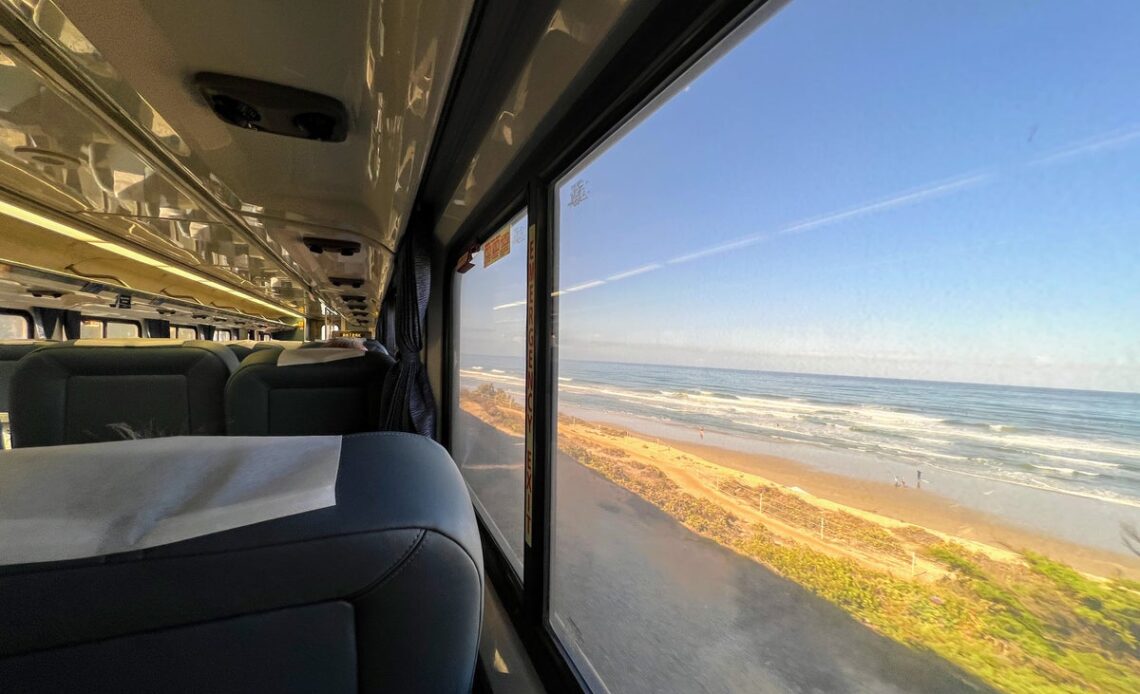A recent family event took me to my dad’s homeland of southern California. I enjoy returning to my country of birth except for one pesky thing: driving. As a Londoner of 11 years, I am spoiled by British public transport (however flawed some might think it). This time, as I reluctantly checked car-hire options and choked at the price of petrol, a wild idea snuck into my brain.
Might it be possible to navigate California entirely by public transport? On a video call, I told my family I might not rent a car and they scoffed. California is, after all, the land of the road trip. One of the world’s first motorways – the Pasadena Freeway – opened in LA in 1940 and, for many, the defining image of California is of driving down a palm-lined Hollywood avenue in a red convertible.
But the madness of this plan was too much to pass up. I would prove a car-free southern California trip was possible, trundling along beachside railway lines rather than sitting stuck in traffic on concrete freeways. To add to the challenge, I vowed to make the trip as sustainable as possible by staying in hotels with strict environmental credentials and supporting community-led businesses with my picks of where to eat, drink and sightsee. What could go wrong?
Pacific Surfliner boarding in San Luis Obispo
(Megan Eaves)
Public transport
The Pacific Surfliner is an Amtrak train service that travels along a 351-mile route hugging the southern California coast. It traverses wine country, passes Disneyland and Hollywood, and travels nearly all the way to the US-Mexico border. It also connects with the rest of the Amtrak network, going east to Chicago or north to Seattle.
Los Angeles and San Diego both have public transport networks with subways, trams, buses and light rail. Apps with integrated, digital top-up cards make ticketing a breeze. You can get from Los Angeles International Airport into several parts of LA, including Amtrak’s Union Station downtown, using the FlyAway airport bus.
San Diego’s trolley system makes getting around simple
(Megan Eaves)
German coach company Flixbus is also expanding its SoCal routes with an eco-friendly fleet of affordable buses from LA to destinations around the region, including San Luis Obispo, where my journey began.
San Luis Obispo
Around 200 miles north of LA, the small city of San Luis Obispo (often shortened to SLO) sits at the heart of its own wine region, which was the setting for the 2004 film Sideways. Founded by Spanish colonists in the…
Click Here to Read the Full Original Article at The Independent Travel…
